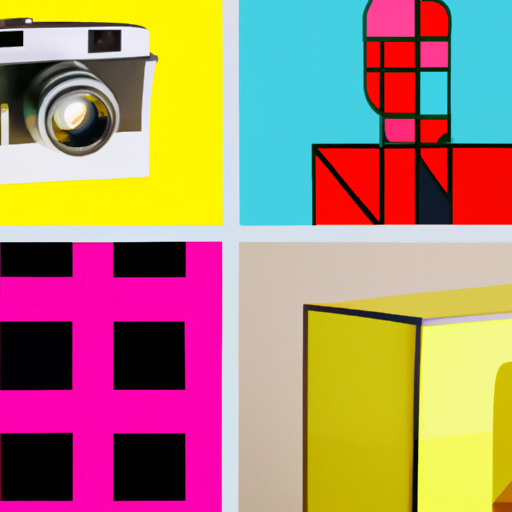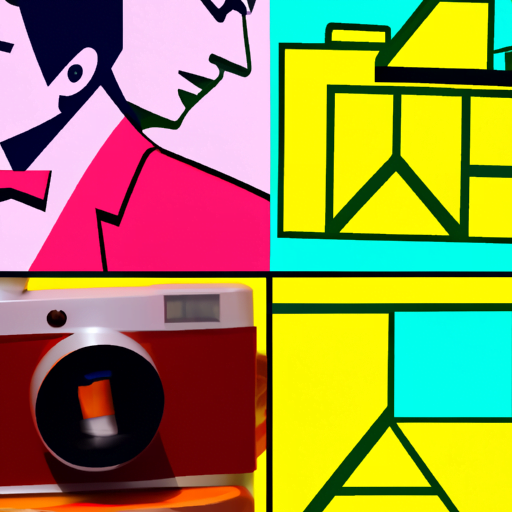
-
Table of Contents
Exploring Cubist Art Influences in Modern Design

Cubism, an influential art movement that emerged in the early 20th century, revolutionized the way we perceive and represent the world. Led by Pablo Picasso and Georges Braque, Cubism challenged traditional notions of perspective and representation, breaking down objects into geometric shapes and multiple viewpoints. While Cubism had a profound impact on the art world, its influence extends far beyond the canvas. In this article, we will explore how Cubist art has influenced modern design, shaping various disciplines such as architecture, interior design, fashion, and graphic design.
The Origins of Cubism
Cubism emerged in the early 1900s as a response to the changing world and the desire to break free from traditional artistic conventions. Picasso and Braque, the pioneers of Cubism, sought to capture the essence of objects by representing them from multiple viewpoints simultaneously. They deconstructed forms into geometric shapes, such as cubes, cylinders, and cones, and fragmented the image to depict different perspectives.
This radical approach to representation challenged the notion of a single fixed viewpoint and introduced a new way of seeing and interpreting the world. The influence of Cubism quickly spread beyond the art world, inspiring a wave of innovation in various design disciplines.
Cubist Influences in Architecture
One of the most prominent areas where Cubist influences can be seen is in architecture. The principles of Cubism, such as fragmentation, multiple viewpoints, and geometric shapes, have been incorporated into the design of buildings around the world.
An excellent example of Cubist-inspired architecture is the De Stijl movement, which emerged in the Netherlands in the early 20th century. Architects such as Gerrit Rietveld and J.J.P. Oud embraced the geometric forms and clean lines of Cubism, creating buildings that reflected the movement’s principles. The Schroder House, designed by Rietveld, is a prime example of Cubist influences in architecture, with its use of geometric shapes and asymmetrical composition.
Another notable example is the Barcelona Pavilion, designed by Ludwig Mies van der Rohe for the 1929 International Exposition in Barcelona. The pavilion features a combination of geometric forms, such as cubes and cylinders, and a play of light and shadow, reminiscent of Cubist paintings.
Cubist Influences in Interior Design
Cubism’s influence can also be seen in interior design, where the principles of the movement have been applied to furniture, lighting, and spatial arrangements.
The Bauhaus movement, founded by Walter Gropius in Germany in 1919, embraced the geometric forms and functional approach of Cubism. Bauhaus designers, such as Marcel Breuer and Ludwig Mies van der Rohe, created furniture that incorporated clean lines, geometric shapes, and a focus on functionality. The Wassily Chair, designed by Breuer in 1925, is a classic example of Cubist-inspired furniture, with its use of tubular steel and geometric forms.
In addition to furniture, Cubist influences can be seen in the spatial arrangements of interior spaces. The fragmentation and multiple viewpoints of Cubism have inspired designers to create dynamic and visually engaging interiors. For example, the Vitra Design Museum in Germany, designed by Frank Gehry, features a fragmented facade that echoes the principles of Cubism.
Cubist Influences in Fashion
Cubism’s influence extends to the world of fashion, where designers have embraced the geometric forms and abstract compositions of the movement.
Designers such as Paco Rabanne and Issey Miyake have incorporated Cubist elements into their collections, creating garments that feature geometric shapes, angular cuts, and abstract patterns. Rabanne’s iconic “12 Unwearable Dresses” collection, created in 1966, showcased dresses made from geometric metal pieces, reflecting the fragmented and abstract nature of Cubism.
Furthermore, the influence of Cubism can be seen in the work of fashion photographers and graphic designers. The use of fragmented compositions, multiple viewpoints, and abstract forms in advertising campaigns and editorial spreads reflects the principles of Cubism.
Cubist Influences in Graphic Design
Cubism has had a significant impact on graphic design, shaping the way we communicate visually.
The use of geometric shapes, fragmented compositions, and multiple viewpoints in graphic design can be traced back to Cubism. Designers such as Paul Rand and Saul Bass, known for their iconic logos and film posters, have incorporated Cubist elements into their work. Rand’s logo for IBM, created in 1956, features a simple geometric form that reflects the principles of Cubism.
Moreover, the principles of Cubism have influenced the field of information design, where designers use visual elements to convey complex information. The use of fragmented and abstract forms in infographics and data visualizations reflects the influence of Cubism.
Conclusion
Cubism, with its revolutionary approach to representation and perspective, has had a profound influence on modern design. From architecture to interior design, fashion to graphic design, the principles of Cubism have shaped various disciplines, inspiring designers to think beyond traditional boundaries and embrace new forms of expression.
The fragmentation, multiple viewpoints, and geometric shapes of Cubism continue to inspire designers today, creating visually engaging and innovative designs. By exploring the influences of Cubism in modern design, we gain a deeper understanding of the evolution of artistic movements and their lasting impact on our visual culture.
